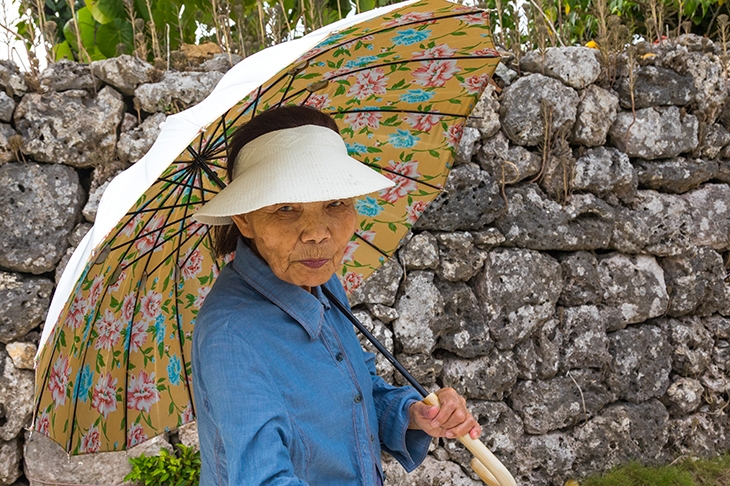When Japan hosts the Rugby Union World Cup next year, and still more so the summer Olympics in 2020, all eyes will be on its omotenashi (hospitality), perhaps its technology, certainly its efficiency, but there will be little thought of symbolism. Not so for the 1964 Tokyo games, when the Olympic flame was carried up its last 160 steps by a 19-year-old named Yoshinori Sakai, who had been born, near Hiroshima, on the day the atomic bomb was dropped. ‘Atom Boy’ bore twin messages: that Japan had been a victim of an unbelievable horror; and that it was now reborn as a modern, democratic state.
The running theme of Christopher Harding’s elegantly written and compelling history of Japan’s past century and a half is that of competing narratives, which bring with them a sense of a country battling to forge, or perhaps preserve, its identity as it emerged from a two-century-long period of prosperous, peaceful but technologically backward isolation. A cultural historian at the University of Edinburgh, Harding traces these stories not just in events and in politics, but in poems, novels, films, philosophy and even psychotherapy.
As such, his focus is largely on those who were critical of, or alienated by, the course the country was taking at various times. This brings in some familiar characters, such as the quixotic novelist-patriot Yukio Mishima, who in 1970 staged a futile and pathetic coup d’etat which ended in his ritual, stomach-cutting suicide. There are also colourful protestors and malcontents whose names have been largely forgotten, including a teacher, Hideko Kageyama, known as ‘Japan’s Joan of Arc’, who in 1885 became the first woman in modern Japan to be imprisoned for political activism when caught carrying explosives to Nagasaki for a revolutionary movement.
We also, however, meet other, more refreshing souls, such as the pair Harding frames the book with: Heisaku Kosawa, who from the 1920s onwards blended Buddhism with Freudian psychotherapy; and the novelist Harumi Setouchi, who became the elderly Kosawa’s patient in the 1960s, and now lives as a Buddhist nun under the name of Jakucho Setouchi.
The main narratives that Harding believes were in competition during the turbulent 20th century were those of Japan as Asia’s first successful moderniser, able to take on the West at its own games, and of Japan as a special, superior place, exceptional since time immemorial. He sees the country as one that was buffeted by huge social, economic and political changes, and which often responded by reaching back, sometimes through invented traditions, for anchors of Japaneseness (such as the Shinto religion and the revived role of the emperor) so as to hold the nation fast.
This approach, of using culture and psychology as the backdrop for history and chronology, ends up being a lot stronger on answering ‘why?’, ‘when?’ and ‘where?’ than ‘how?’. There is much fine detail of what happened and what was said and written about it, but too little analytical explanation or comparative context from other countries or times.
On the book jacket is an effusive quote from Neil MacGregor, which makes perfect sense once the reader sees that Japan Story closely resembles the former British Museum director’s great shows, whether on Germany or the history of the world in 100 objects. It is an often intriguing and thought-provoking patchwork, connected by a clear narrative, but at times notable for what it misses out and at risk of feeling shallow on some issues.
For example, although Harding says quite a lot about religion’s role during Japan’s early emergence into the world during the late 19th and early 20th centuries, in the postwar period he finds space to include only one of the country’s ‘new religions’. This was the small Aum Shinrikyo doomsday sect which in 1995 killed 12 people on the Tokyo underground using sarin nerve gas and whose leader, Shoko Asahara, was finally executed in July.
This was certainly a noteworthy and horrifying event, but to cite it in isolation is a bit like describing modern American religion just by reference to Kool-Aid and the 1978 Jonestown Massacre. The far bigger and politically influential Soka Gakkai doesn’t even merit a mention in Japan Story, despite having millions of adherents and, through its allied political party Komeito, forming a key part of the current governing coalition.
National identity is a slippery idea, as we see in every attempt to pin down Britishness, Frenchness or indeed Japaneseness. But it is built, as Harding says, out of the stories we tell about ourselves. In 2020, when the great festival of youth and sporting prowess comes back to Tokyo after 56 years, the biggest untold story will be that of ageing. How fitting it would be if this time the Olympic flame were to be carried by one of Japan’s 70,000 centenarians, a new but central part of modern Japan’s identity. Perhaps the steps to the urn could be replaced by an escalator.






Comments